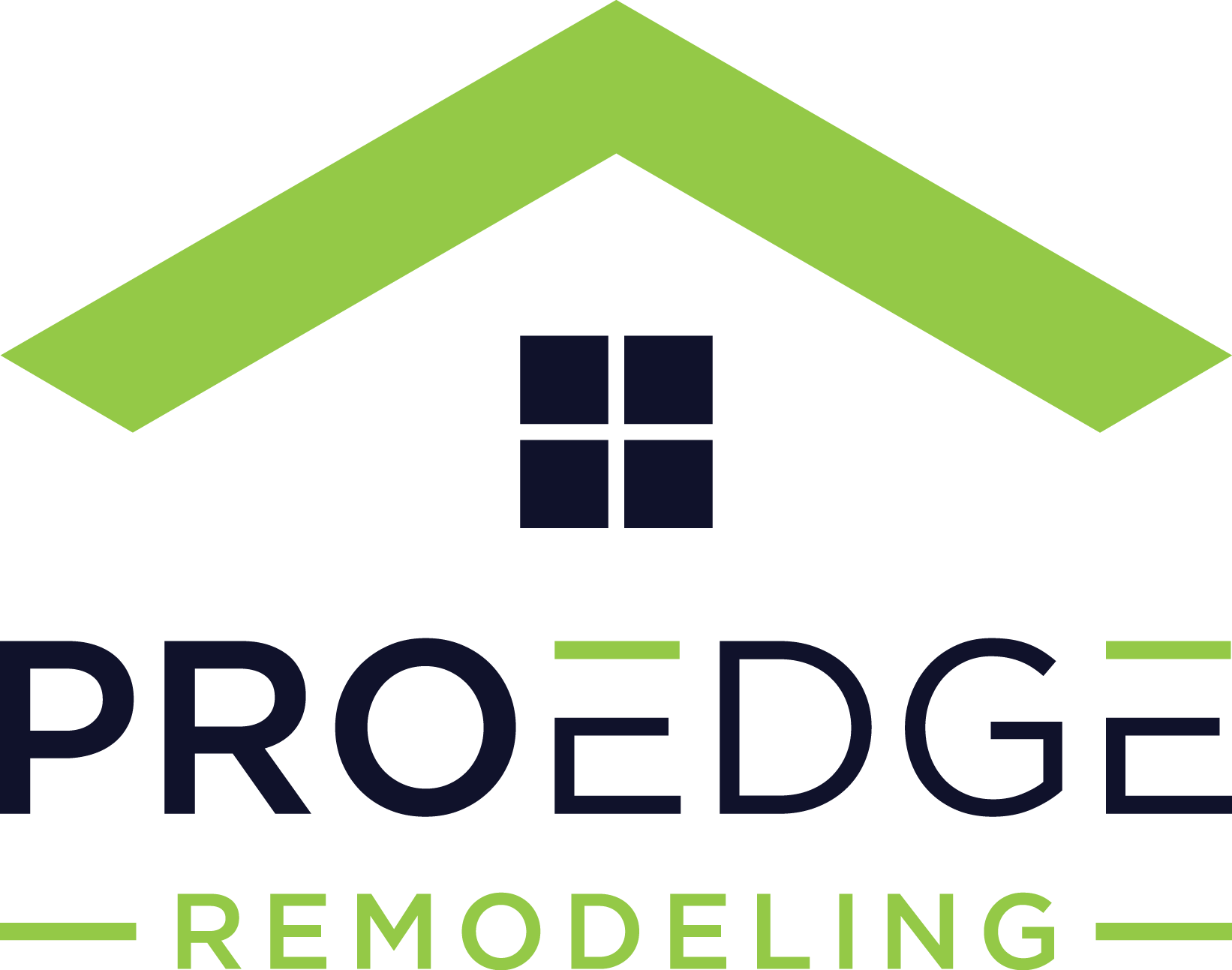Top 2025 Landscaping Trends

If you’ve been dreaming of upgrading your outdoor space, 2025 is bringing plenty of fresh ideas to the table. With more people treating their yards like an extension of their homes, landscaping has become less about just keeping the grass green—and more about creating spaces that are beautiful, functional, and environmentally friendly.
This year’s top trends strike the perfect balance between sustainability, style, and comfort. Here’s a look at what’s trending in landscaping for 2025.
Table of Contents
- Drought-Tolerant and Native Plant Landscaping
- Outdoor Living Rooms and Kitchens
- Smart Irrigation Systems
- Pollinator-Friendly Gardens
- Vertical Gardens and Living Walls
- Climate-Responsive Hardscaping
- Edible Landscaping
- Low-Voltage Outdoor Lighting
- Rewilding and Naturalistic Designs
- Eco-Friendly Lawn Alternatives
- Additional Home Improvements Resources
Drought-Tolerant and Native Plant Landscaping
Let’s face it—watering your yard constantly quickly becomes a hassle. That’s why more homeowners in 2025 are turning to drought-tolerant and native plant landscaping. These plants are built to thrive in your local climate, meaning they need way less water and attention than traditional grass or exotic flowers.
Native plants also do a great job of supporting local wildlife like bees, butterflies, and birds. Plus, since they’re naturally suited to your soil and weather conditions, you won’t have to stress about them withering during a dry spell or needing loads of fertilizer to stay alive.
Not sure where to start? Here are a few native plant ideas by region:
- West Coast: California poppies, lavender, and succulents like agave and sedum
- Southwest: Desert marigold, yucca, and sage
- Midwest: Purple coneflower, black-eyed Susan, and prairie dropseed
- Southeast: Coreopsis, beautyberry, and switchgrass
- Northeast: Bee balm, New England aster, and ferns like ostrich fern
Outdoor Living Rooms and Kitchens
Backyards are turning into full-blown extensions of the home. In 2025, outdoor living rooms and kitchens are having a major moment, and it’s easy to see why. Homeowners are embracing the idea of creating cozy, stylish spaces where they can cook, relax, and entertain.
Think comfy lounge furniture, weatherproof rugs, and even outdoor TVs or speakers. Add a pergola or retractable awning for some shade, and suddenly you’ve got the perfect spot for lazy afternoons or evening hangouts. Fire pits are still a fan favorite, giving you that warm glow and s’mores-worthy vibe, while built-in grills and full kitchen setups make it easy to host without constantly running in and out of the house.
If you’re dreaming up your own outdoor space, here are a few tips to make it functional:
- Define zones: Use furniture, planters, or rugs to create separate areas for cooking, dining, and lounging.
- Think about flow: Keep your kitchen near the back door for easy access to supplies, and make sure there’s enough space to move around when guests are over.
- Choose durable materials: Look for weather-resistant fabrics, rust-proof furniture, and surfaces that can handle the elements.
- Add lighting: String lights, lanterns, or low-voltage landscape lighting can instantly boost the ambiance and let you enjoy the space long after the sun goes down.
Whether you’re keeping it simple or going all out with a pizza oven and wet bar, an outdoor living space is a fun, functional way to make the most of your yard.
Smart Irrigation Systems
Watering your lawn doesn’t have to be a guessing game anymore. With smart irrigation systems, 2025 is all about working with the weather—not against it. These systems are getting smarter than ever, syncing up with your home automation setup to take the hassle out of keeping your yard green.
One of the coolest features? Soil moisture sensors. These handy gadgets actually measure how wet the soil is and only water your plants when they need it. Combine that with weather-based scheduling—which adjusts watering times based on rainfall, temperature, and forecast—and you’ve got a super efficient system that takes care of business without overdoing it.
With smart irrigation systems, you save water, lower your utility bills, and do your part for the environment. Plus, no more soggy lawns or accidentally fried flowerbeds. You can even control most of these systems right from your phone, so whether you’re on vacation or just lounging on the couch, you’re still in charge of your yard.
Pollinator-Friendly Gardens
In 2025, creating pollinator-friendly gardens is one of the biggest landscaping trends—and it’s a win for both your yard and the environment. More homeowners are designing outdoor spaces that attract and support bees, butterflies, and hummingbirds.
The goal is to create a mini ecosystem right in your backyard. That means choosing plants that provide nectar, pollen, and shelter throughout the growing season. Some of the best pollinator plants trending in 2025 include:
- Milkweed (a must for monarch butterflies)
- Lavender, coneflowers, and black-eyed Susans
- Bee balm and salvia
- Zinnias, sunflowers, and lupine
- And for hummingbirds? Trumpet vine, columbine, and fuchsia
Want to design a garden that’s truly buzzing with life? Mix in a variety of flower shapes, sizes, and colors to appeal to different pollinators. Plant in clusters so the bugs don’t have to travel far for their next snack, and stagger bloom times so there’s always something in season. Avoid pesticides, and add a little water feature or shallow dish with pebbles for a drink station.
These gardens are low-maintenance, gorgeous to look at, and help boost local biodiversity.
Vertical Gardens and Living Walls
Vertical gardens and living walls are stealing the spotlight in 2025, especially for those in urban areas or homes with smaller outdoor spaces. Instead of spreading out, these gardens go up, turning blank walls, fences, and balconies into lush, green showstoppers.
Living walls can help purify the air, reduce noise, and even cool down surrounding areas—making them perfect for city living or sun-drenched patios.
You don’t need to be a pro landscaper to create one. There are tons of DIY vertical garden kits out there, from pocket-style planters to stacked pots and modular wall systems. You can grow herbs, flowers, succulents—even small veggies if you’ve got enough sunlight.
A few maintenance tips to keep in mind:
- Choose the right plants based on your light conditions—shade-tolerant options for low-light spots and sun-lovers for brighter walls.
- Water wisely—many systems have built-in irrigation or drip options, but hand-watering with a long-spout can also do the trick.
- Keep things trimmed and tidy—prune regularly to encourage growth and prevent overcrowding.
Whether you’re going for a full-on green wall or just a cute vertical herb garden, it’s an easy, eye-catching way to breathe life into tight spaces.
Climate-Responsive Hardscaping
As summers keep getting hotter, homeowners are getting smarter about how they design their outdoor spaces. In 2025, it’s all about choosing materials that look great and help keep your space cooler and more eco-friendly.
One big trend? Heat-reflective pavers and cool decking. These materials are designed to absorb less heat from the sun, so your patio or walkway doesn’t turn into a scorching surface.
Another smart move: permeable materials. Unlike solid concrete, permeable pavers let water soak through instead of pooling or running off. That helps reduce flooding, supports groundwater, and can even cool the surrounding area naturally. It’s practical and better for the planet.
Of course, just because something’s functional doesn’t mean it can’t be stylish. This year, popular hardscape colors are shifting toward soft neutrals and natural tones—think sandy beige, charcoal gray, and even warm terracotta. Materials like textured concrete, recycled stone, and eco-friendly composite decking are also getting lots of love for both their looks and sustainability.
The goal is to strike the perfect balance between form and function—creating beautiful, long-lasting surfaces that can handle the elements and keep your yard comfortable no matter the forecast. So whether you’re redoing a patio or adding a new walkway, thinking climate-smart is definitely the way to go.
Edible Landscaping
Instead of sticking veggies in a hidden corner of the yard, more homeowners are weaving herbs, fruits, and vegetables right into their landscape design. Think basil and rosemary lining your walkway, strawberries spilling out of decorative planters, or a raised bed full of rainbow chard and colorful peppers acting as a garden focal point.
Raised beds are super popular right now—not only do they make gardening easier on your back, but they also help keep things neat and organized. You can even get creative with decorative planter boxes that match your patio or porch style.
If you really want to take it up a notch, try companion planting—that’s when you pair certain plants together that help each other grow. For example, tomatoes love being near basil, while marigolds can help repel pests naturally. It’s a clever way to boost your garden’s health while adding even more variety to your space.
Whether you’ve got a big backyard or just a sunny balcony, edible landscaping lets you make the most of your space.
Low-Voltage Outdoor Lighting
Homeowners are leaning into energy-efficient LED lights not just to save on electricity, but to create cozy, inviting spaces they can enjoy.
Whether you’re setting the mood for a backyard dinner party or just want to avoid tripping over the garden hose at night, low-voltage lighting gets the job done without blasting your power bill. LEDs last a long time, come in a variety of color temperatures, and can be installed almost anywhere.
Smart lighting systems are also becoming more popular. With these setups, you can control your lights straight from your phone—dim them, change the color, or set them on a timer. Some even sync with motion sensors or your home’s security system for an extra layer of safety. And if you’re looking for an even easier setup? Solar-powered options are better than ever, with improved battery life and brighter bulbs that actually hold up.
Not sure where to start? Here are a few key areas to light up:
- Pathways and walkways – for safety and a nice glow as you walk through the yard
- Steps and stairs – to prevent trips and falls
- Decks and patios – for ambiance and functionality during evening hangouts
- Garden beds – to highlight plants and landscaping features
- Entryways and driveways – for both curb appeal and added security
A little lighting goes a long way in making your outdoor space more welcoming, safer, and just all-around better for those long summer nights.
Rewilding and Naturalistic Designs
If you’re craving a yard that feels more like a peaceful nature escape than a perfectly manicured lawn, you’re going to love the rewilding trend. In 2025, more homeowners are ditching the overly polished look and embracing a more natural, untamed aesthetic.
Rewilding doesn’t mean letting your yard go wild in a chaotic way—it’s about creating intentional wildness. Think meandering gravel paths, clusters of native grasses that sway in the breeze, wildflowers popping up in unexpected places, and garden beds with soft, flowing edges instead of rigid lines. It’s the landscaping version of perfectly imperfect.
Not only does this style look gorgeous and calming, but it’s also low-maintenance and eco-friendly. Native plants thrive without constant upkeep, and letting areas grow more freely supports local wildlife like birds, bees, and butterflies.
To blend structure with softness, try mixing natural elements with a few carefully chosen manmade touches. A gravel walkway edged with stones can guide the eye while still feeling organic. Pair wilder garden beds with simple benches or rustic wooden fencing to anchor the space. Or frame your softer, free-flowing planting areas with clean borders or intentional focal points like a birdbath or sculpture.
Eco-Friendly Lawn Alternatives
Let’s be honest—traditional lawns can be a lot of work. Constant mowing, watering, fertilizing… it adds up fast. That’s why more and more homeowners in 2025 are rethinking their grass and going for eco-friendly lawn alternatives that look great and are way easier to maintain.
One of the best swaps? Ground covers like clover, moss, and creeping thyme. These low-growing plants are lush, green, and surprisingly tough. Clover, for example, stays green longer in drought conditions, doesn’t need much mowing, and even helps enrich the soil with nitrogen. Creeping thyme adds a pop of color with tiny purple flowers. Moss thrives in shady spots and gives your yard a cool, peaceful vibe with almost zero effort.
Another option that’s gaining traction is artificial turf. Today’s turf is much more realistic than the old-school plastic stuff, and it gives you that “always green” look without any watering or mowing. It’s especially useful for high-traffic areas or shaded spots where grass just won’t grow. That said, turf can get hot in direct sun, and since it’s made of synthetic material, it’s not quite as environmentally friendly as living ground covers.
So why cut back on traditional grass areas? Besides saving you time and money, reducing turf can help conserve water, lower emissions from lawn equipment, and create healthier habitats for pollinators and other critters. Plus, a yard full of texture, color, and variety just feels more interesting and inviting.
Conclusion
From low-maintenance native plants to outdoor kitchens and eco-friendly lawn swaps, the 2025 landscaping trends are all about making your yard work smarter, look better, and feel more like an extension of your home. Whether you’re into sustainability, high-tech upgrades, or just want a more relaxing space to hang out, there’s something on this list for everyone.
So go ahead—pick a trend or two that speaks to you and start imagining the possibilities. Even small changes can make a big difference in how your outdoor space looks and feels. And if you’re not sure where to start, don’t hesitate to chat with a landscaping pro or sketch out a rough plan to bring your ideas to life. Your dream yard is just a few smart choices away!
Additional Home Improvements Resources
- 10 Summer Home Maintenance Tasks for Homeowners
- Water Heater Installation Cost
- 7 Exterior Window Shutter Styles to Transform Your Home

Anna has over six years of experience in the home services and journalism industries and serves as the Content Manager at MyHomePros.com, specializing in making complex home improvement topics like HVAC, roofing, and plumbing accessible to all. With a bachelor’s degree in journalism from Auburn University, she excels in crafting localized, comprehensive guides that cater to homeowners’ unique needs. Living on both coasts of the United States has equipped her with a distinctive perspective, fueling her passion for turning any house into a cherished home through informed, personalized decision-making.
Connect with top-rated local contractors who can help you with siding, roofing, HVAC, windows, and more. Get free quotes from verified professionals in your area today.








